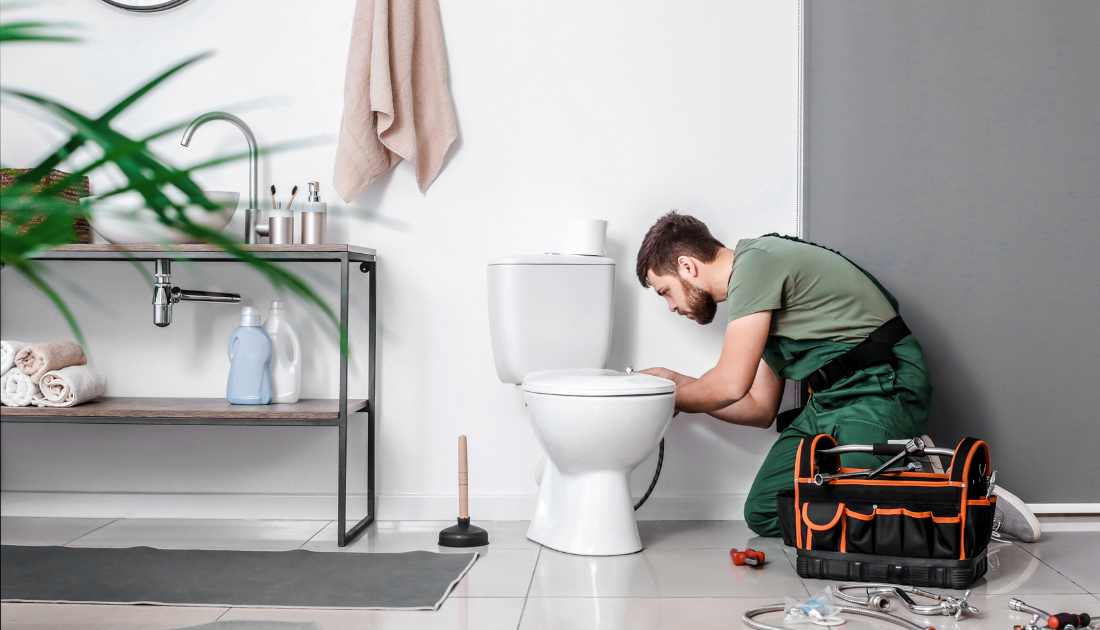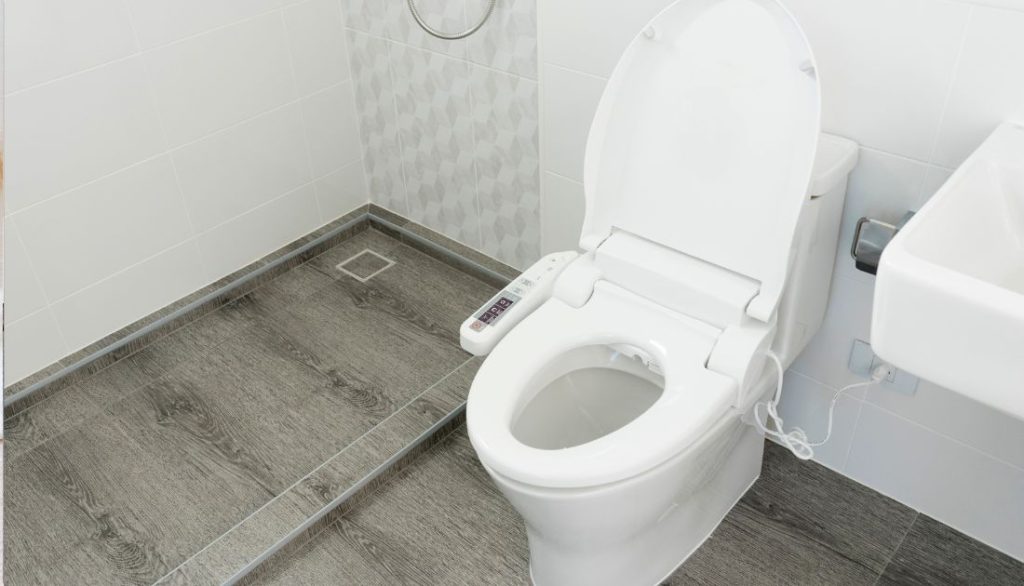Table of Contents
What is a water closet?
A water closet is a small, enclosed room containing a toilet. It provides privacy and improves hygiene by isolating the toilet area from other living spaces. Water closets are often separate from full bathrooms, which include additional fixtures like sinks and showers. This separation can enhance a home’s functional layout, making it more convenient for multiple people to use bathroom facilities simultaneously.
Water closets also contribute to property value by offering an additional, dedicated space for the toilet. They are valued for their practicality, privacy, and contribution to modern homes’ overall aesthetics and functionality.
The History of Water Closets
Ancient civilizations like the Indus Valley and Minoans had early forms of water closets.
The Greeks and Romans also developed sophisticated aqueduct systems to bring water into their restrooms.
Chamber pots were common in the Middle Ages, but by the 16th century, flush toilets started appearing in European palaces.
Water closets have evolved from simple chamber pots to complex flushing mechanisms throughout history. As technology advanced, sanitation improved dramatically, paving the way for modern toilets, which are now essential to our daily lives.
Evolution of Toilet Design
- Ancient Times: In ancient civilizations like Egypt and Mesopotamia, toilets were basic pits in the ground with a simple seat on top for convenience.
- Medieval Period: During the Middle Ages, chamber pots were common for waste disposal indoors, while outdoor latrines often involved holes in wooden planks over cesspits.
- Modern Innovations: The 19th century saw major advancements in toilet design, including Alexander Cummings’s invention of flush toilets, which improved sanitation and public health.
Anatomy of a Water Closet
- Bowl: The bowl is the main body of the water closet where waste is deposited.
- Trapway: This S-shaped pipe at the base of the bowl prevents sewer gases from entering your home.
- Seat and Lid: This is where you sit on the water closet, with the lid as a cover when not used.
Types of Water Closets
- Two-piece toilets: These are the most common type found in homes. They consist of a separate tank and bowl assembled together.
- One-Piece Toilets: Unlike two-piece models, these toilets have the tank and bowl fused as a single unit for a sleeker appearance.
- Wall-Mounted Toilets: These space-saving options feature a wall-mounted bowl with the tank concealed within the wall. They offer a modern look and easier cleaning around the base.
Choosing the right type of water closet can depend on bathroom size, aesthetics, maintenance needs, and personal preferences. Each style has its own advantages and considerations when selecting the best option for your home.
Installation Considerations
- Space: Ensure you have enough space for the water closet and proper clearance around it for installation and easy use.
- Plumbing: Ensure your plumbing connections are correctly positioned to connect with the water closet without any issues or leaks.
- Ventilation: Adequate ventilation is crucial to prevent moisture buildup, mold growth, and unpleasant odors in the bathroom. Install a vent fan if necessary.
When installing a water closet, consider these key factors: space availability, plumbing connections, and proper ventilation. These elements play a significant role in ensuring the efficiency and functionality of your toilet.
Maintenance and Cleaning Tips
- Regular Cleaning: Make sure to clean your water closet at least once a week with a non-abrasive cleaner to prevent stains and odors.
- Avoid Harsh Chemicals: Avoid harsh chemicals like bleach or ammonia when cleaning your water closet, as they can damage the porcelain finish.
- Check for Leaks: Regularly check for leaks around the toilet’s base and any visible cracks in the tank or bowl.
Proper maintenance and regular cleaning are essential to keep your water closet functioning properly and looking great for years. By following these simple tips, you can ensure that your bathroom remains a clean and comfortable space for you and your family.
Common Issues and Troubleshooting
- Running Toilet: If your toilet keeps running even after you flush it, the issue may be a faulty flapper or fill valve. You can try adjusting the float to see if that resolves the problem. If not, consider replacing these parts.
- Clogged Drain: A clogged toilet is a common annoyance that can usually be fixed with a plunger. Make sure to use quick, forceful plunges to dislodge any blockages in the pipe. If this doesn’t work, you may need to call a professional plumber for further assistance.
- Leaky Seals: Leaks around the base of your toilet indicate worn-out wax seals that need replacement. This job requires removing the toilet and installing new seals, which should be done carefully to prevent future leaks from occurring.
Regular maintenance and prompt attention to issues are key in keeping your water closet functioning properly.
Eco-Friendly and Smart Toilet Options
Regarding eco-friendly toilet options, consider low-flow toilets that use less water per flush. These toilets can significantly reduce water consumption without compromising on performance. Another option is a dual-flush toilet, which chooses between a full flush for solid waste and a partial flush for liquid waste.
Smart toilets are another practical choice for upgrading their bathroom experience. These high-tech toilets often have bidet functionality, heated seats, automatic flushing, and even built-in air purifiers. While they may come at a higher price point than traditional models, their convenience and efficiency make them a worthwhile investment in the long run.
In addition to saving water and energy, these eco-friendly and smart toilet options can enhance your overall comfort and hygiene in ways that standard toilets cannot match. As technology continues to evolve, more choices are available than ever when upgrading your bathroom fixtures.

Pros and Cons of a Water Closet
Pros of a Water Closet
Privacy
A water closet provides a dedicated toilet space, ensuring privacy. This separation is especially useful in shared living spaces, allowing individuals to use the restroom without intruding on others. The enclosed environment of a water closet helps to create a sense of personal space, enhancing comfort and reducing the chances of interruptions.
Cleanliness
Water closets contribute to better hygiene by containing and isolating the toilet area. This separation helps prevent the spread of germs and maintains a cleaner overall bathroom environment. Regular cleaning is easier, and the rest of the bathroom remains free from toilet-related odors, contributing to a healthier living space.
Extra Storage
With a water closet, you can use the space above and around the toilet for additional storage. Shelves, cabinets, and other storage solutions can be installed to hold toiletries, cleaning supplies, and other essentials. This feature helps maximize bathroom space, keeping it organized and free from clutter.
Looks Nice
A well-designed water closet can enhance a bathroom’s aesthetic appeal. With various design options available, it can complement the overall décor, adding a touch of elegance and modernity. The enclosed space can also hide the toilet from view, contributing to a more visually pleasing bathroom environment.
Adds Property Value
Installing a water closet can increase a property’s value. Potential buyers often appreciate a water closet’s added privacy and functionality. It’s seen as a modern and desirable feature, making homes more attractive on the real estate market and potentially leading to higher sale prices.
Cons of a Water Closet
Takes Up Space
One of the main disadvantages of a water closet is that it occupies additional space in a bathroom. This can be a significant drawback in smaller bathrooms, as it limits the available area for other fixtures and features. Proper planning is required to ensure the space is used efficiently without cramming the bathroom.
Limited Uses
A water closet is designed specifically for toilet use, which limits its functionality. Unlike a larger bathroom space that can serve multiple purposes, a water closet’s single function can be seen as a drawback. It doesn’t provide the versatility needed in households with varied needs, making it less adaptable compared to a more open bathroom design.

FAQs
What is the Difference Between a Water Closet and a Bathroom?
A water closet is a small room containing a toilet. In contrast, a bathroom typically includes a toilet, sink, and bathing facilities like a shower or bathtub. The main difference lies in the range of fixtures: a water closet focuses on the toilet, providing privacy for that function, while a bathroom is a more comprehensive space for various hygiene needs.
Is a Water Closet a Toilet or a Bathroom?
A water closet is primarily a room with just a toilet. It’s different from a full bathroom, with additional fixtures like a sink and a shower or bathtub. The term “water closet” often emphasizes the presence of the toilet alone, highlighting its function as a private space for using the toilet, separate from other bathroom activities.
Why is a Water Closet Important?
A water closet is important because it offers privacy and convenience for using the toilet. It helps maintain hygiene by isolating the toilet area from other home parts. Additionally, having a separate water closet can enhance the value of a property and improve the overall aesthetic and functional layout of a living space, making daily routines more comfortable.

